Dnajc5b contributes to male fertility by maintaining the mitochondrial functions and autophagic homeostasis during spermiogenesis
- PMID: 39899042
- PMCID: PMC11790535
- DOI: 10.1007/s00018-024-05552-1
Dnajc5b contributes to male fertility by maintaining the mitochondrial functions and autophagic homeostasis during spermiogenesis
Abstract
DnaJ heat shock protein family member C5 beta (DNAJC5B), also known as cysteine-string protein beta, exhibits a prominent expression in testicular tissue and plays an important role in acrosomal exocytosis in vitro. Nevertheless, the precise role and underlying mechanism of DNAJC5B in spermatogenesis and male fertility remain poorly understood. The meta-analysis of RNA-sequencing datasets from porcine and murine testes reveals that Dnajc5b could be a pivotal factor in spermatogenesis. This study illustrates that male fertility declines with an increased ratio of abnormal spermatozoa in germ-cell knockout Dnajc5b mice. DNAJC5B has been identified as a mitochondrial protein with high expression in spermatids. The absence of DNAJC5B induces a cascade of mitochondrial damages, including oxidative stress, mitochondrial stress in the testes, and lower mitochondrial membrane potential of spermatozoa. In vivo and in vitro evidence demonstrates that DNAJC5B mitigates excessive cellular autophagy and mitophagy via DNAJ domain under environmental stress conditions, such as starvation or exposure to mitochondrial uncouplers FCCP and CCCP. This study highlights the important role of DNAJC5B in safeguarding male fertility by preserving mitochondrial function and regulating autophagy during spermiogenesis.
Keywords: Dnajc5b; Autophagy; Meta-analysis; Mitochondria; Spermiogenesis.
© 2024. The Author(s).
Conflict of interest statement
Declarations. Ethics approval: Our studies did not include human participants, human data, or human tissue. The animal procedures were approved by the Institutional Animal Care and Use Committee of Huazhong Agricultural University (HZAUMO-2024-0186). Competing interests: The authors have no relevant financial or non-financial interests to disclose.
Figures
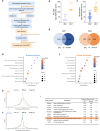
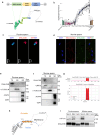
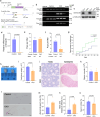
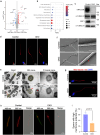
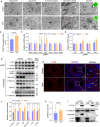

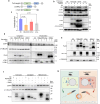
Similar articles
-
Evaluation of apoptotic- and autophagic-related protein expressions before and after IVM of fresh, slow-frozen and vitrified pre-pubertal mouse testicular tissue.Mol Hum Reprod. 2017 Nov 1;23(11):738-754. doi: 10.1093/molehr/gax054. Mol Hum Reprod. 2017. PMID: 29040674
-
DNAJB13, a type II HSP40 family member, localizes to the spermatids and spermatozoa during mouse spermatogenesis.BMC Dev Biol. 2014 Sep 19;14:38. doi: 10.1186/s12861-014-0038-5. BMC Dev Biol. 2014. PMID: 25233908 Free PMC article.
-
Essential role of germ cell glycerol-3-phosphate phosphatase for sperm health, oxidative stress control and male fertility in mice.Mol Metab. 2024 Dec;90:102063. doi: 10.1016/j.molmet.2024.102063. Epub 2024 Nov 13. Mol Metab. 2024. PMID: 39542419 Free PMC article.
-
Autophagy: a multifaceted player in the fate of sperm.Hum Reprod Update. 2022 Feb 28;28(2):200-231. doi: 10.1093/humupd/dmab043. Hum Reprod Update. 2022. PMID: 34967891 Free PMC article. Review.
-
Androgen receptor roles in spermatogenesis and fertility: lessons from testicular cell-specific androgen receptor knockout mice.Endocr Rev. 2009 Apr;30(2):119-32. doi: 10.1210/er.2008-0025. Epub 2009 Jan 27. Endocr Rev. 2009. PMID: 19176467 Free PMC article. Review.
References
-
- Nishimura H, L’Hernault SW (2017) Spermatogenesis. Curr Biol 18:R988–R994. 10.1016/j.cub.2017.07.067 - PubMed
-
- Song H, Zhu L, Li Y, Ma C, Guan K, Xia X, Li F (2015) Exploiting RNA-sequencing data from the porcine testes to identify the key genes involved in spermatogenesis in large White pigs. Gene 2:303–309. 10.1016/j.gene.2015.07.057 - PubMed
MeSH terms
Substances
Grants and funding
LinkOut - more resources
Full Text Sources
Miscellaneous

